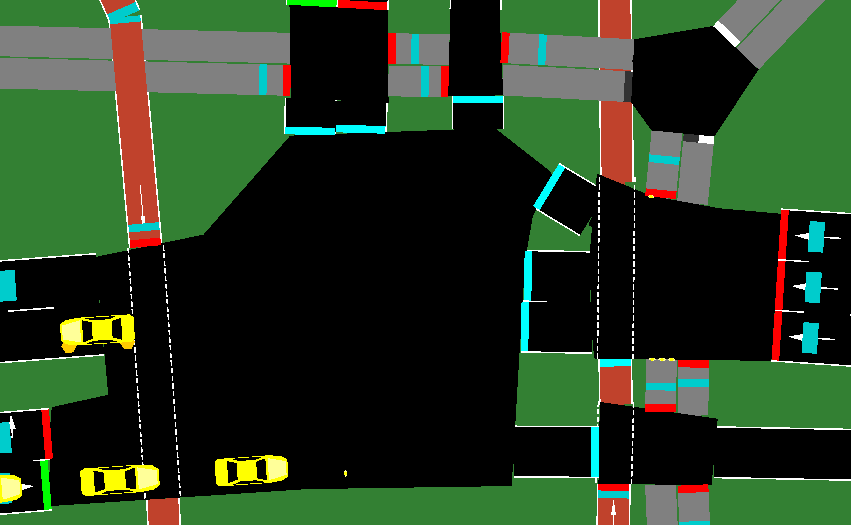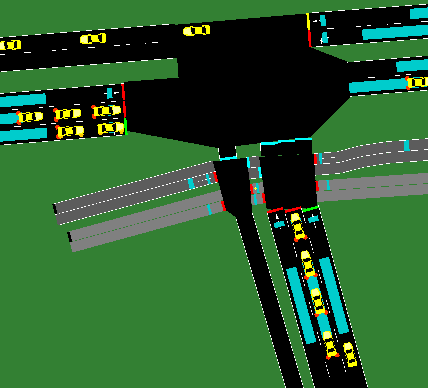Thanks Jakob, setting the next junction to 'zipper' solved this
right away!
As for pedestrians, given the network in the screenshot, could I
create a single edge for pedestrians where they can walk in both
directions? When I create a crossing, NETEDIT says that the
crossing "has no target". I am somewhat unsure how to determine
what edges the crossing should connect to so I can then use
dynamic assignment via od2trips. The information on creating
crossings with NETEDIT on the wiki does not mention how to edit
their position, or how to connect them to edges.
Using the option --persontrips gets rid of the old warning, but
now SUMO (0.32.0 release version) says "Warning: The attribute
departPos is no longer supported for walks, please use the person
attribute, the arrivalPos of the previous step or explicit
stops.". Also, the pedestrians no longer just cross the junctions
in my network, but seem to sometimes skip junctions, and sometimes
start walking all over the network, causing a lot of collisions
and delays. They also no longer wait for red trafficlights.
Probably, the way I currently built my network does not play
nicely with pedestrian trips.
Greets, Menno

On 27-6-2018 10:55, Jakob Erdmann
wrote:
Hello,
1) I suspect to two-lane edge that leaves the intersection
towards the west narrows to 1 lane and vehicles already try to
be on the correct continuation lane. To avoid this behavior,
set the node type to 'zipper' where the two lanse merge.
You can diagnose strategic lane choice by right clicking a
vehicle and selecting 'show best lanes'.
2) If you model pedestrians as vehicles then they will have
an improper dynamics model (e.g. they will not use the whole
width of the sidewalk for walking in both directions).
You can use od2trips with the option --persontrips to
generate persons instead.
If you model pedestrian crossings as crossing objects you
can also control them using their index link number. In the
latest development version it is also possible to control both
sides of the crossing with different indices (and of course
you can chose indices freely) so you have the same power as
with the current modeling approach.
Regarding placement, you can configure crossing shapes
freely via xml input and netedit.
regards,
Jakob
_______________________________________________
sumo-user mailing list
sumo-user@xxxxxxxxxxx
To change your delivery options, retrieve your password, or unsubscribe from this list, visit
https://dev.eclipse.org/mailman/listinfo/sumo-user



